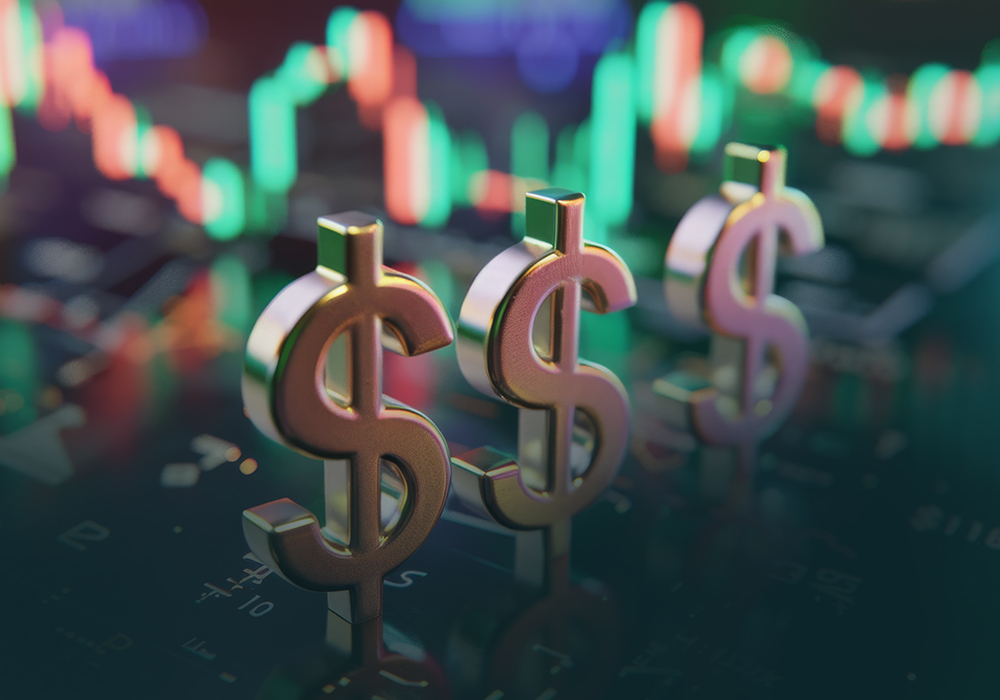Futures contracts are one of the most popular instruments in the world of trading, allowing traders and investors to speculate on the future price of commodities, indices, and other assets. Unlike traditional buying and selling of assets, futures contracts represent agreements to buy or sell an asset at a specified price at a future date.
This creates opportunities for traders to profit from price movements without needing to own the underlying asset. In this article, we will explore how futures contracts work, their benefits, risks, and how traders can use them to profit from market trends.
What Are Futures Contracts?
A futures contract is a legal agreement to buy or sell a specific asset (such as a commodity or financial index) at a predetermined price on a set date in the future. These contracts are standardized and traded on exchanges, such as the Chicago Mercantile Exchange (CME), making them easily accessible to traders around the world.
Futures contracts cover a wide range of assets, including:
- Commodities like oil, gold, and agricultural products (e.g., wheat, corn, or soybeans).
- Financial indices such as the S&P 500, NASDAQ, or Dow Jones.
- Currencies and interest rates.
One key feature of futures trading is that both the buyer and seller are obligated to fulfill the contract by the expiration date. However, most traders in the futures market do not hold the contract until expiration; instead, they trade the contract itself, profiting from price movements along the way.
How Do Futures Contracts Work?
A futures contract specifies several key elements:
- The asset being traded (e.g., gold, crude oil, or a stock index).
- The contract size, which defines how much of the asset is being bought or sold (e.g., 1,000 barrels of oil or 5,000 bushels of corn).
- The delivery date, which is the future date on which the contract is settled.
- The price, which is the agreed-upon price for the asset at the time of the contract’s expiration.
For example, if a trader agrees to buy a crude oil futures contract at $70 per barrel, they are obligated to buy the specified amount of oil (usually 1,000 barrels) at that price when the contract expires, regardless of what the market price is at that time.
Speculating with Futures Contracts
Most traders use futures contracts to speculate on price movements rather than to physically buy or sell the underlying asset. They aim to profit by buying low and selling high (or vice versa), just like in other markets.
- Going Long: If a trader expects the price of an asset to rise, they can go long (buy) a futures contract. If the price increases, they can sell the contract for a profit before the expiration date.
- Going Short: If a trader believes the price of an asset will fall, they can go short (sell) a futures contract. If the price declines, they can buy it back at a lower price to make a profit.
For example, if a trader buys a crude oil futures contract at $70 per barrel and the price rises to $75 per barrel, they can sell the contract at $75 and make a $5 per barrel profit, or $5,000 (since one contract typically covers 1,000 barrels).

Hedging with Futures Contracts
Apart from speculation, futures contracts are widely used for hedging by businesses and investors who seek to protect themselves from price fluctuations. Companies that deal with physical commodities (like oil producers or farmers) use futures to lock in prices for their products, ensuring stability despite market volatility.
For instance, a wheat farmer may sell wheat futures contracts to guarantee the price of their crop before harvest. This way, even if market prices drop after the harvest, the farmer can still sell their wheat at the predetermined price set by the futures contract.
Similarly, airlines may use fuel futures contracts to lock in the price of oil, helping them avoid the risk of rising fuel costs.
Benefits of Futures Trading
- Leverage: One of the primary advantages of futures trading is the use of leverage. Traders can control large positions with a relatively small amount of capital. This is because they are only required to deposit a percentage of the total contract value, known as the initial margin. Leverage allows traders to amplify their potential gains (and losses).
- Liquidity: The futures market is highly liquid, especially for popular contracts like crude oil, gold, and stock indices. This liquidity ensures that traders can easily enter and exit positions without facing significant price slippage.
- Diversification: Futures contracts provide opportunities for traders to diversify their portfolios by gaining exposure to a wide range of asset classes, including commodities, indices, and currencies. This helps traders balance risk across different markets.
- Hedging Opportunities: Futures contracts are ideal for hedging price risks in volatile markets. Businesses and investors can lock in prices for assets, helping to mitigate the impact of price fluctuations.
Risks of Futures Trading
- High Leverage: While leverage increases the potential for profit, it also significantly raises the risk of losses. Because traders only need to put up a small portion of the contract’s value as margin, even small price movements can lead to large percentage gains or losses. This means that without proper risk management, traders can lose more than their initial investment.
- Volatility: Futures markets can be highly volatile, especially for commodities that are sensitive to geopolitical events, natural disasters, and supply chain disruptions. For instance, oil prices can swing dramatically due to geopolitical tensions or OPEC production decisions, leading to large price swings in oil futures contracts.
- Expiration and Settlement: Futures contracts have an expiration date, which means traders must be mindful of the contract’s settlement process. If a trader holds a contract until expiration, they may need to deliver or receive the physical asset (e.g., barrels of oil or bushels of corn). Most traders close their positions before expiration to avoid this, but failure to do so can result in unexpected obligations.
- Margin Calls: If the market moves against a trader’s position, their broker may issue a margin call, requiring them to deposit additional funds to maintain their position. If the trader cannot meet the margin call, their position may be liquidated, potentially locking in significant losses.
How to Succeed in Futures Trading?
- Risk Management: Proper risk management is crucial in futures trading. Traders should use stop-loss orders, limit the size of their positions, and avoid over-leveraging to protect themselves from large losses.
- Understanding Market Fundamentals: Successful futures traders need to be well-versed in the underlying factors that drive price movements in their chosen markets. For example, crude oil traders need to stay informed about global supply-demand dynamics, geopolitical events, and OPEC decisions.
- Monitoring Contracts and Expirations: Traders must keep track of contract expirations and roll their positions into new contracts if they intend to maintain exposure beyond the expiration date.
- Staying Informed: Continuous monitoring of market news, economic data, and technical indicators is key to making informed decisions in futures trading.
Conclusion
Futures contracts offer a versatile and powerful tool for both traders and investors. Whether used for speculation, hedging, or portfolio diversification, futures provide a way to profit from market movements without owning the underlying asset.
However, the leverage and volatility involved mean that traders must approach futures markets with caution, implementing sound risk management strategies to avoid significant losses. With the right knowledge and discipline, futures trading can be a profitable addition to a trader’s toolkit.
Unlock your potential with MuxCap’s seamless trading.
Popular Posts
- Understanding Stock Market Indicators: Key Metrics for Successful Trading and Investment

- Exploring the World of Crypto Futures and Options: Strategies & Risks

- How Leverage Works in Forex and Futures Markets: Opportunities and Pitfalls

- Algorithmic Trading in the Stock Market: The Future of Automated Investing


























